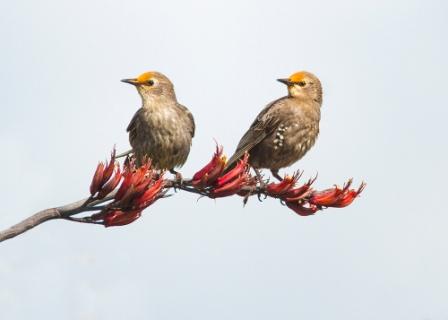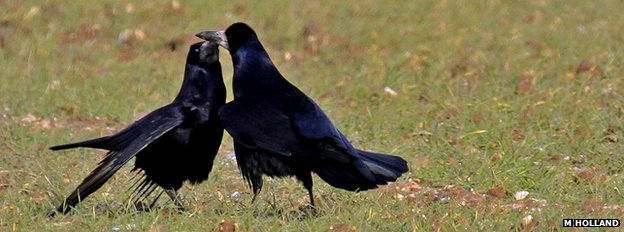Many members of the WOS will already be subscribers to British Birds or may have taken up trial offers. Whether or not, you may like to receive their free e-newsletter every month. This offers a flavour of what has been published recently and what is in the pipeline in areas such as book of the month, news and comment, the rarities section and special offers.
Birds of Conservation Concern 4, compiled by a coalition of conservation and monitoring organisations, has just been published. Species which occur regularly in the UK are assessed for inclusion on one of three lists, Red, Amber, Green with birds on the Red List being of highest conservation concern.
There are now 67 species on the Red List, 96 on the Amber List and 81 on the Green List.
A rare and spectacular winter visitor to Wiltshire, Smew is a duck whose habitat is changing because of global warming and it is doing twice as well in conservation areas protected by the EU, research has shown.
Scientific studies have shown that the occurence of wintering Smew have been spreading northwards across Europe as temperatures rise. A study of wetland data shows that nearly a third of the birds now spend winter in north-east Europe, compared with just 6% two decades ago.
In that region, Smew populations have grown twice as fast within Special Protection Areas established under the EU Birds Directive.
For more details follow the link:
http://www.theguardian.com/environment/2015/jan/26/rare-european-duck-protected-areas-smew-drakes
'Through The Wire' tells the story of the British POWs who survived incarceration in German camps in World War Two by studying the birds that flew freely all around them.
Based on real data (latitude, longitude and height) from the University of Amsterdam the animation initially shows the tracks of 12 birds, but then concentrates on a pair - male and female, as they migrate south in Autumn 2010 from the Veluwe forest in the Netherlands to warmer weather on the African coast (Liberia, Ghana and Cameroon). After wintering in Africa, in Spring 2011 the birds fly back. But en route we see the female lose her way - possibly due to unfavourable winds. After a long journey the male arrives back in the Veluwe forest and waits for her.
Follow this link to watch the animation:
http://vimeopro.com/south422/animal-gps-track-animation/video/85808414
Over the past few weeks BirdWatch Ireland HQ has been receiving lots of phone calls and emails about strange birds with bright orange heads that have been visiting gardens around Ireland. They tend to flock with Starlings and House Sparrows and can be quite numerous in some areas, though they can’t be found in any field guides. This is something that BirdWatch Ireland have become used to at this time of year, but for some reason this summer the number of reports has been absolutely unprecedented.
Rather than being some exotic new visitor, these in fact ARE Starlings and House Sparrows that have been feeding on a plant called New Zealand Flax (Phormium tenax). Though native to New Zealand, where it is often known by its Maori name of Harakeke, this species has been planted commonly in gardens around the country and has even become naturalised in the wild in many areas. We are used to plants being pollinated by insects and even by the wind, but New Zealand Flax uses another method: it is pollinated by birds.
For more information, follow this link:

A new four-winged dinosaur has been discovered, with exceptionally long feathers on its tail and "hindwings".
Changyuraptor yangi was a gliding predator which lived in the Cretaceous period in what is now Liaoning, China.
Its remarkable tail feathers - measuring up to 30cm - are the longest in any non-avian dinosaur.
For more information, click on the following link:
Rooks have been observed acting as 'tool-makers' and cooperatively between individual birds. The BTO is intererested in receiving any observations of any such behaviour.
More details can be found here:http://www.bbc.co.uk/news/science-environment-28105964
